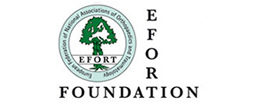Delivering timely and effective orthopaedic care to an ageing population while healthcare budgets are under pressure are challenges which unite the orthopaedic profession in Europe and beyond. At the EFORT Congress in London, an international panel discussed ways to use limited resources more effectively.
London, 5 June 2014 – “Orthopaedic care today is facing a real tsunami. On the one hand we have financial austerity with world debt having hit more than 53 trillion US-dollars“, said Prof Timothy Briggs, President of the British Orthopaedic Association. “At the same time, life expectancy is rising and the population is ageing – it is estimated that a quarter of the people living in the EU will be over 65 by 2035. If we want to maintain high quality care for our patients in the future, we have to do things differently.”
In the UK alone, more than 25 percent of surgical interventions are for the treatment of musculoskeletal disease and this figure is set to rise significantly over the next ten years. Worldwide, musculoskeletal disorders are the leading cause of disability and time off work. “Against the background of an ever increasing demand for orthopaedic care and enormous pressure on healthcare budgets, we could be facing a ticking time bomb. We have to take precautions so that this explosion does not happen”, said EFORT President Prof Manuel Cassiano Neves (Lisbon). “We have to try to square the circle by mobilising more resources for the best care and save money at the same time.”
How this could be possible was a key topic discussed at the 15th EFORT Congress in London. The Congress is organised by the European Federation of National Associations of Orthopaedics and Traumatology (EFORT) together with the British Orthopaedic Association (BOA). Patient safety is the main topic of this major scientific event which gathers more than 7,000 participants from around the globe.
A special session at the Congress was dedicated to the goal of developing a pan-European consensus on these vital questions. The challenge is “how to improve the outcomes for patients, reduce complications and therefore save significant amounts of money,” as Prof Briggs puts it. “Resources today are sometimes wasted on misdirected referrals, inappropriate treatments, re-admissions or dealing with complications and litigation.” Experts from all sections of the orthopaedic community have been involved in this discussion process – orthopaedic surgeons, healthcare planners, insurers, companies and specialists in health economics. The experts will continue working on these issues after the London meeting and come up with recommendations.
Decreasing infection rates would provide resources for additional care
There are many examples of how the necessary changes could be achieved, as Prof Briggs was able to show already in his recent UK report “Getting it right first time”. It can be seen from the example of hospital infections that savings and improved patient care are not mutually exclusive, on the contrary: “We have found out that in the UK, infection rates in total hip or knee replacement can vary between hospitals from 0.2 percent to over four percent. If the lowest infection rates could be achieved throughout the system, current annual savings would be 200 to 300 million pounds, that is 250 to 370 million euros. These savings would allow for an extra 40,000 to 60,000 joint replacements, carried out at no extra cost and with no requirement for potential rationing”, said Prof Briggs. “By using results such as this, we can improve the patient’s experience, reduce complications and spend every pound or euro more effectively.“
Outcomes data and evidence based therapeutic approaches needed
Another starting point, according to Prof Briggs, is the consistent application of evidence based and gold standard procedures. “Large variations in orthopaedic outcomes for similar procedures exist, with many different types of prostheses being used, many of which have little data on long-term effectiveness. New diagnostic or therapeutic methods are being offered to patients on a broad basis, but sometimes with little efficacy. For example in shoulder surgery, in the last ten years in the UK there has been a 746 percent increase in the number of patients undergoing arthroscopic subacrominal decompression with no long-term data on outcomes, and other European countries can report similar figures.”
Better training for GPs and medical students
Medical education and training might also play a crucial role when it comes to improving care within limited budgets. In the UK, up to 30 percent of appointments with general practitioners are being filled by patients seeking help for musculoskeletal disorders, in patients over 75, this rate increases to more than 50 percent. “Yet GPs often have little orthopaedic training due to limited exposure at medical school. So it is not surprising that studies have shown up to 43 percent of subsequent musculoskeletal referrals are of low value.” commented Prof Briggs. A new UK study presented at the EFORT Congress supports this point, showing that medical schools seem to fail to ensure graduating medical students have basic competence in musculoskeletal medicine. Only 21 percent of the 210 medical students who were tested on their musculoskeletal medicine knowledge with a validated tool passed, even though they had completed their final university exams.
“There are many indications that we can really make a difference in the assurance of high-quality orthopaedic care in Europe, and we are therefore going to develop recommendations at the European level“, said Prof Briggs. “In a next step, it will be important to convince the European policy makers at national and European level of the necessary measures.”
About EFORT
The European Federation of National Associations of Orthopaedics and Traumatology (EFORT) is the umbrella organisation linking Europe´s national orthopaedic societies. EFORT was founded in 1991 in the Italian Marentino. Today it has 45 national member societies from 42 member countries and eleven associate scientific members.
EFORT is a non-profit organisation. The participating societies aim at promoting the exchange of scientific knowledge and experience in the prevention and treatment of diseases and injuries of the musculoskeletal system. EFORT organises an annual congress, seminars, courses, forums and conferences within Europe. It also initiates and supports basic and clinical research.
Sources: EFORT Congress Symposium: The International Healthcare Timebomb – An Avalanche Of Orthopaedics, 5 June 2014; EFORT Abstract Al-Nammari et al.: The Inadequacy Of Musculoskeletal Knowledge In Graduating Medical Students in the UK.


